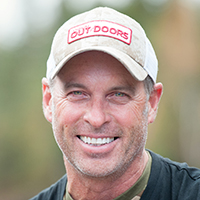You likely already know that walleye prefer to feed at night or in low light. Walleye have exceptionally large eyes with a reflective layer behind the retina. This layer reflects light that passes through, back into the eye, giving walleye a second chance to spot things. Their sensitivity to light makes them tougher to catch during the day staying on bottom or hiding in weeds. But once darkness sets in, walleye move into the shallows to ambush prey. As a boat or shore angler, you can take advantage of this to target big fish. Best after sunset While the morning and evening bite windows are consistently productive, peak feeding activity often occurs in total darkness, making late-night fishing the most rewarding time. Moon factor Moon phases and light levels significantly impact bite timing. Paying attention to major and minor moon phases can help maximize fishing success. When these align with your available fishing window, prioritize high-percentage areas. Night light also affects walleye positioning in the water column. On bright moonlit nights, walleye feed higher, hitting prey silhouetted against the light. On darker nights, they stay lower. Spring Be it on the boat, or from shore, spring and fall are undoubtably the best seasons to put your time in. In spring, post-spawn walleye will stay shallow, making them accessible from shore. The Ontario walleye season opener is in May (check regs for date in your location), and this will have allowed for some weed growth to emerge, providing cover. To avoid snagging in the weeds, opt for more weedless presentations like glow floats with live bait, single-hook jig patterns, and shallow-running crankbaits. Key locations include spawning areas, adjacent weed flats in three to 10 feet of water, and areas close to deep water. Boat anglers can expand their approach with vertical jigging or trolling. Trolling spinner rigs tipped with live bait through sparse weeds is particularly effective, but once a pod of fish is found, casting often becomes the better option. Spring offers some of the most productive walleye fishing and is a time when landing a limit of eater-sized walleye can seem almost too easy. Summer Summer presents the biggest challenge for walleye anglers, but fishing at night improves your odds. The biggest benefit? Warm weather — no need for heavy layers. However, locating actively feeding fish is the primary obstacle. During summer, walleye don’t rely as much on shoreline
Please log into your OFAH Community account to access this content. Not an OFAH member or Ontario OUT of DOORS Subscriber? Follow the links below to join or subscribe and gain access to exclusive online content.




Contact Information
PO Box 2800 / 4601 Guthrie Dr.
Peterborough, Ontario Canada K9J 8L5
Phone: 705-748-OFAH (6324)
Fax: 705-748-9577
Join Our Newsletter
Watch
Shop
Follow